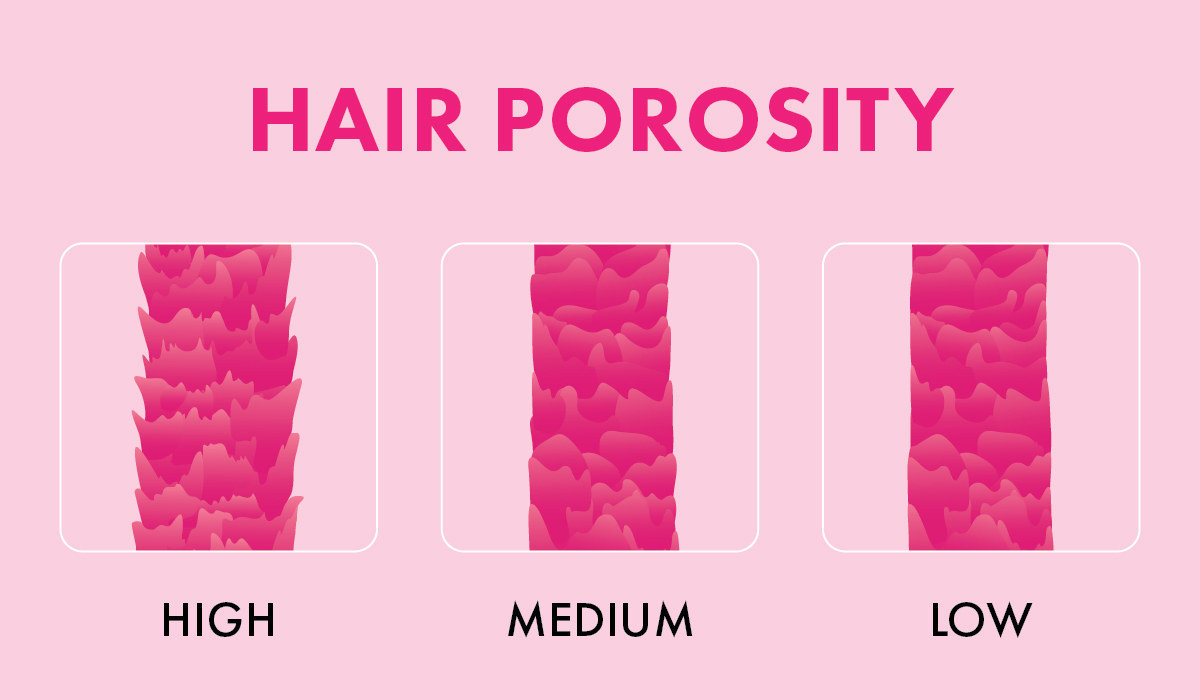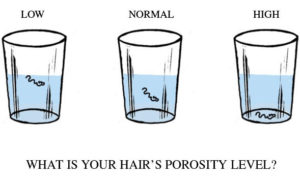How to Condition High Porosity Hair
- Posted on 29 December, 2021
- Hot Topic
- By Martha O
Knowing the porosity of your hair is key to figuring out the best natural hair care routine for your hair. It helps you understand what your hair needs in order to thrive. I know, a lot of people might avoid this topic because it may seem too complicated but it's really not. In this article, I will be breaking down everything into bits for you.
What is porosity?
Porosity is your hair's ability to absorb and retain moisture, oils, or water. There are three types of porosity. Your hair may be low, medium, or high porosity.
1. Low porosity: This is when your hair cuticles are too close together and unable to absorb and retain moisture or water. Instead, they sit on them and products build up on the hair rather than absorb into the hair. Women with low porosity hair will notice that their hair takes longer to get wet when saturated and takes a long time to dry as well.
2. Medium (normal) porosity: Here, the hair cuticles are raised and able to easily absorb and retain moisture. Medium porosity hair has bounce and elasticity and can hold styles well.
3. High porosity: If the hair cuticles are far apart or raised, it is able to absorb moisture easily but you can lose that moisture quickly too. This is high porosity hair. It easily absorbs water, dries quickly, and needs more products to stay moisturized.
High porosity hair is genetic but oftentimes it is caused by damage from harsh chemicals, heat, over styling, hair coloring, and harsh shampoos. These things damage and lift the cuticles making them more porous.
Characteristics of high porosity hair
- Dry brittle hair
- Looks and feels dry
- Tangles easily
- Frizzy hair
- Prone to breakage
- Absorbs moisture and products quickly
How to condition high porosity hair
So how can you condition your high porosity hair and keep it moisturized?
Caring for high porosity hair means that you have to reduce the damage caused to the cuticle and help your hair retain moisture. So to condition your high porosity hair, you need to incorporate some tips and tricks into your natural hair regimen.
This video by NaturalRegin explains in detail, hair tips every high porosity natural needs to know.
Here's a breakdown of the 5 high porosity hair tips she shared in her video.
1. Do protein treatments
High porosity hair and protein treatments go hand in hand. However, don't overdo it, just go hand in hand. Protein treatments fill the gaps in your hair cuticle and make it stronger and when your hair is stronger, it is less prone to breakage. High porosity needs this extra protein in order to be stronger.
How often should you do a protein treatment?
NaturalRegin likes to do her protein treatment once every three months. But if her hair is heat or color damaged, she would do it once a month. You should do a protein treatment based on how damaged your hair feels, too much protein is bad for your hair and not enough protein can lead to breakage. One way to know if you have a protein overload is if your hair feels dry and brittle.
2. Deep condition often
High porosity hair needs moisture but a protein - moisture balance is also very essential. To never get off balance, NaturalReign likes to use a moisturizing deep conditioner one week and a protein deep conditioner the next week. Her general rule of thumb is this: when her hair feels dry, she goes in with the moisture and when her hair feels like it's not strong enough, she goes in with the protein.
3. Reduce heat on your hair
Heat can be damaging to the hair no matter your hair porosity. However, high porosity hair is more prone to heat damage. To prevent heat from damaging her high porosity hair, NaturalReign has not straightened her hair in two years, she would usually blow dry her hair on low heat but never straighten it. Not straightening her hair constantly as before has made a difference in her hair health.
4. Use thick products
High porosity hair always needs that extra bit of moisture, so you need to ensure your hair is moisturized often. To get that extra moisture, use thick moisturizing products like leave-ins or butter. NaturalReign loves a thick leave-in because her hair will drink it up and stay moisturized. Light leave-ins aren't heavy enough for her hair, she would have to do a wash and go every day or every two days to retain moisture.
5. Don't dye your hair too much
If you decide to dye your hair, NaturalReign advises against using permanent dyes. You should use rinses instead, the kind of dyes which can be washed off. Rinses will give you healthy color-treated hair while permanent dyes will lift your cuticles higher and cause moisture to leave your hair faster.
How to test for hair porosity
There are three easy methods you can use to determine your hair porosity.
1. The float testWash your hair with shampoo to remove any product buildup, do not condition your hair. Take a clean strand of hair and drop it into a bowl of water. Allow it to sit for 2-4 minutes. If your hair floats, you have low porosity. If your hair is slowly sinking, it is medium porosity. And if it sinks, you have high porosity. Your hair absorbed the water easily and sank quickly.
2. The slide test Take a strand of hair and starting from the ends, slide your fingers towards your scalp. If you feel small bumps on the way up, your cuticle is raised and you have high porosity hair. If your fingers slide easily up the strand but feel dense and hard, you have low porosity hair. If your finger slides smoothly, then you have medium porosity hair.
3. The spray bottle testTo do this test, take out a small section of hair and pin the rest back. You can use all your hair if you like. Fill up a spray bottle with water and spray over that section just enough to mist it. If the water sits on top of your hair you have low porosity. If the water sits on your hair for some minutes then gets absorbed into the hair, this is medium porosity. But if your hair easily absorbs the water, you have high porosity.




